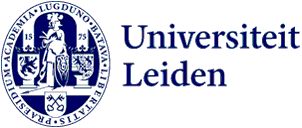Copyright
All the sources (both textual and visual) you use for your educational video or online course need to meet the requirements of Dutch copyright law. Below, you’ll find some guidelines for how to include references and attributions for visual resources in your video work, and where to find usable imagery and footage.
When creating the content for your video, gather all the articles or resources you have used in a separate list of references. To reference articles that you used for creating your content, follow the same guidelines as referencing used in your field. For other resources, write down the URL, the applied licence, the title and the name of the author. At the end of your video, you need to attribute to the sources you used.
So if you would use the image shown below in your video, you would need to include the following reference at the end of your video (in a “sources” slide):

When teaching an online course we recommend you to mainly use open access literature, so every student can access the material.
More information on the intellectual property of videos or other educational materials created for open-acces education can be found on this web page.
Don’t forget that the participants in your video need to give consent. You can let them sign athe release form, that your video coordinator can share with you.
Creative Commons licence
When it comes to collecting imagery or music for your video it is important to check for copyright restrictions. For some images or music you will need to pay to use it, but there is also a lot of free material available with so-called Public Domain/CC0 or Creative Commons licences. Material that is dedicated to the Public Domain is free from copyright restrictions.
You can use CC-licensed materials as long as you follow the licence conditions (more information on CC licences? Click here). Below you can find a short summary of possible CC licences and the most important licence conditions that you should take into account. Make sure the Creative Commons licence suits the intended use of the material and the end product.

Stock Photos
If you cannot find the right images/ footage in the creative commons domain, you could also make use of stock images, for which you have to pay. If you are looking for a photograph, first consult the University image database (Dutch only). If you do not find anything suitable there, you can purchase a stock photograph via the Strategic Communication & Marketing department (SCM). You can also commission a photograph. Photo & Digital offers services from professional photographers and other professionals.
More info
If you want advice on a particular licence (can I use this picture or not), or if you have other questions with regard to copyright law, you can contact the Copyright Information Office.
Multimedia
- https://commons.wikimedia.org
- https://flickr.com – Narrow the licence type down to “Modifications allowed”.
- https://pixabay.com/ - Images and videos.
- https://www.pond5.com/free - Public Domain media.
Images
- https://www.pexels.com
- https://quest.eb.com/
- https://finda.photo/
- https://thenounproject.com
- Images.google.com - Click on tools and adjust the ‘usage rights’.
Videos
Music
- https://incompetech.com/music/royalty-free/
- https://freemusicarchive.org/
- https://www.youtube.com/audiolibrary/music
